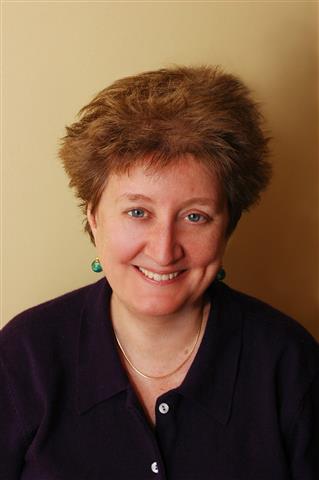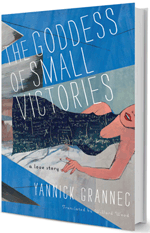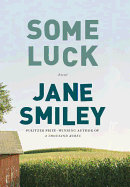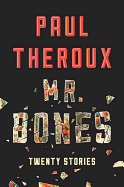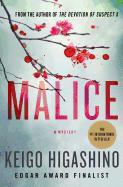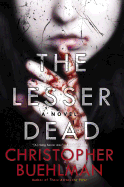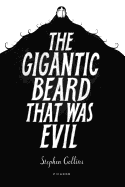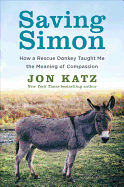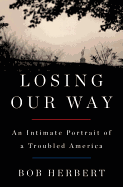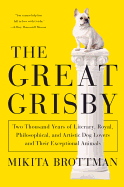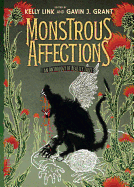 |
| photo: Bruno Charoy |
Yannick Grannec is a graphic designer, freelance art director, professor of fine arts and enthusiast of mathematics. The Goddess of Small Victories is her first novel. She lives in Saint-Paul de Vence, in France. (Interview translation courtesy of Other Press)
Why did you tell the story of Kurt Gödel, or more accurately, of his wife, Adele?
When I was 18, I read Gödel, Escher, Bach and became fascinated by the work of Kurt Gödel. Twenty years later, I read, by chance, an essay about the friendship between Gödel and Einstein and, as the subject interested me, read other essays. In one of them, I came across a few lines about Adele that struck me as condescending. This question was implied: How could such a genius marry such a common woman?
Knowing Gödel's life--the man was paranoid, anorexic, depressed--I wondered: How could a woman love such a difficult man for 50 years? There was nothing scientific about it, but that seemed to me to be the real mystery.
I had the intuition of a human story that needed telling, one that came with an opportunity to share what has always fascinated me, the history of science, as part of the fabric. To tell it in the voice of Adele seemed to me completely natural: she was the Candide, which allowed me to transmit complicated ideas with simple words. I felt an immediate empathy for her, as though I'd always known her: she spoke to me of all these destinies of women, of these lives sacrificed for love or out of social obligation. She spoke to me of my mother, my grandmothers, and all those other women howling through my DNA.
What kind of research did you do?
Even before beginning to write, I read a great number of documents over the course of at least a year. Of course, I had begun with everything that was within my intellectual reach that had to do with Kurt Gödel, then Einstein, then the biographies of those scientists who shared their destiny. But as soon as I pulled on one thread, an infinite tapestry appeared: I had to stick my nose into epistemology, into history in general, into philosophy, etc. I admit to having had a few periods of discouragement. In particular about Husserl, on whose subject, clearly, I stumbled. Like Adele, I didn't have the keys. I assembled a wide-ranging collection of photographs to nurture my imagination (the people, the period clothing, the places, etc.), and then I went on reconnaissance to Vienna and to Princeton, to soak up those places. In certain neighborhoods, those two cities seem to be stopped in time. It is very easy to imagine the era before the war in Vienna and the 1950s in Princeton. I had come up with a route, from house to café, from university to sanatorium, to follow in Gödel's footsteps. I understood why, for example, they lived in the suburb of Grinzing: the 38 tram was direct from the mathematics university. Kurt didn't like complications in his daily life. Each new discovery stirred up big emotions: seeking Kurt and Adele on the street where they lived, I found an old photography studio at the address that had belonged to Adele's father. I've returned there since, only to discover it has been replaced by a snack bar. Destiny, in this case, gave me this gift. Three years later, I would have missed it. At Princeton, I timed the route Gödel walked with Einstein, to determine the length of their conversations. At the Gödels' tomb, in Princeton, I cried. I've lived with them; they're my family.
As for having the nerve to make Einstein, Gödel or Oppenheimer speak, I owe it to a kind of wild foolishness, the one that urges you to jump from a diving board into cold water. In retrospect, I shiver at the thought.
Why did you decide to switch back and forth between the latter-day view of Anna's life and Adele's life as it happened?
Anna was born in hindsight. I needed a character who would listen to Adele. And I felt a need to interrogate the Gödels about their lack of reaction to the rise of the Nazis. I needed to explore this gray area. I'm going to say something very pretentious, but the novel's construction is meant to be a metaphor for the incompleteness theorem. The system observed here is not a mathematical system, but that of Adele and Kurt's relationship. Extrapolating from the incompleteness theorem--Gödel forgive me!--we can say: one has to be outside of the system to understand the system. So I opted for a double construction: a subjective perspective, from the inside of the system where Adele recounts her story and her feelings in the first person, and a more objective perspective, in the third person, where the narrator observes Adele and the way she tells her story, completed by the letters of the Gödels' nurse, Elizabeth Glinka.
Anna was therefore supposed to be an objective observer, but the more I wrote, the more her character developed. The relationship with the old woman became a creative re-creation, allowing me to work without documentation, following my intuition. Her destiny became a mirror of Adele's with, obviously, different paradigms of social origins and historical circumstances. In the end, Anna is, for me, a very positive character: she gives Adele her affection and the possibility to pass on the vital force that defines her. So the novel doesn't conclude with a disappearance, but with all the possibilities of a life being constructed.
Toward the end of the book, it felt that you gave a more intimate look inside Adele. Was this intentional?
The first part of the book takes place during the time of the events that tormented her: life in Vienna during the heady days, the rise of Nazism, the flight across the Pacific, the move to the United States, McCarthyism. At the end of the novel, we accompany the couple through their aging, in a life that's more and more reclusive. We must understand Adele's solitude, her boredom. I felt strangely compelled to make the reader feel Mrs. Gödel's inner battles: her anger, her discouragement followed by a sort of abandon, the acceptance of her own weakness and inevitable decline.
Did you have any role in the translation of this novel by Willard Wood into English? What was the process like?
My English is really not good enough to judge the translation. I have complete confidence in Judith Gurewich, my American publisher, and Stephen Carrière, my French publisher, both of whom are completely bilingual. I know it's a very good translation. I loved working with the translator, Willard Wood: we exchanged numerous e-mails. Willard has a sensitivity, an attention to detail that moved me, and a deadpan sense of humor that I greatly appreciated. For other translations, I had to sometimes explain, literally, the idiom or the double senses, which can be very exhausting. That wasn't the case with Willard, who has a perfect mastery of the second degree in both languages. It was very important to me to keep the humor of the original French, if I can allow myself to describe it that way!
How important is historical accuracy in fiction, and how faithfully does this novel stick to the historical record?
To slip into Gödel's life demanded a great deal of exactitude. When you use someone's life, respect is an imperative at every moment. For Kurt, it wasn't difficult; his life had already been explored and dissected by different biographers, like the "bible" by John Dawson, Logical Dilemmas. For Adele, I had so little information. I had to make myself empathetic, attempt to guess her feelings, her emotions, through the few anecdotes I was able to gather: the aggression of the Nazis on the steps of the university, the naturalization scene in Oskar Morgenstern's memoirs, Dorothy Morgenstern's saying that she was very intelligent and funny. I constructed three chronologies: an historic and scientific frieze; a timeline of Kurt Gödel's life (his trips, moves, work, depressions and health problems); and underlining it, one of Adele's life as well. She was the unknown in the equation determined by history and the history of her husband. I tried to guess at and date her moods, her joys and, at times, her despair.
The main difficulty lay less in historical exactitude than in approaching scientific exactitude. First of all, it was necessary to attempt to understand. I could talk about this famous incompleteness theorem in a general way, but not in any detail; I'm not a mathematician, and I'm not at all conversant in the language of logic in which it's expressed. Then, I had to betray. Because the language of mathematics is, by its very definition, objective--but to integrate it into fiction, and to share it, I could only use written language, a subjective tool. To go from sign to metaphor is a betrayal. So I needed to accept, and have others accept, an inevitable inexactitude.
For the part on the continuum hypothesis, I took a course taught by a mathematician friend. This part is more developed, because I thought I understood it better, and my intention was to use only what I thought I understood, because it was important to me to be intellectually honest. Of course, often, we think we understand, but it's only the surface of things. --Julia Jenkins
Yannick Grannec: On Mathematics and Metaphor
